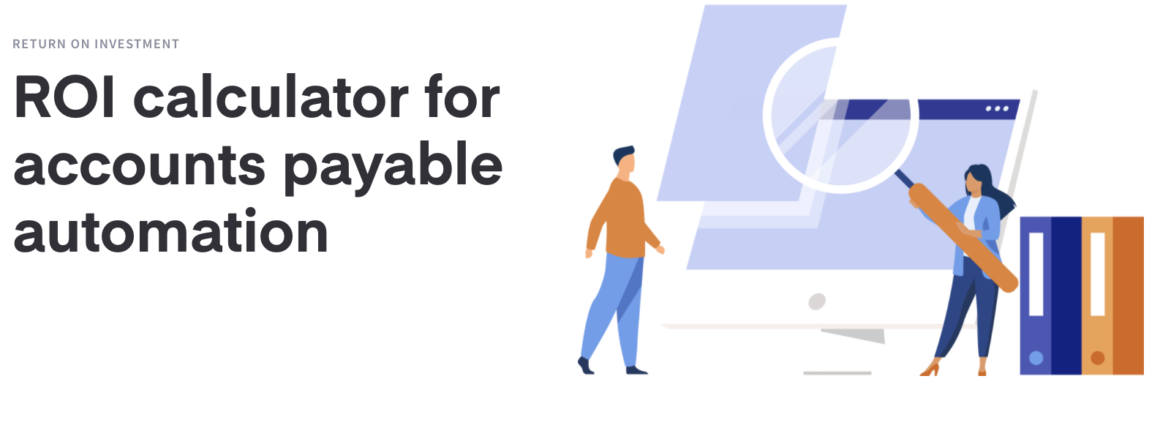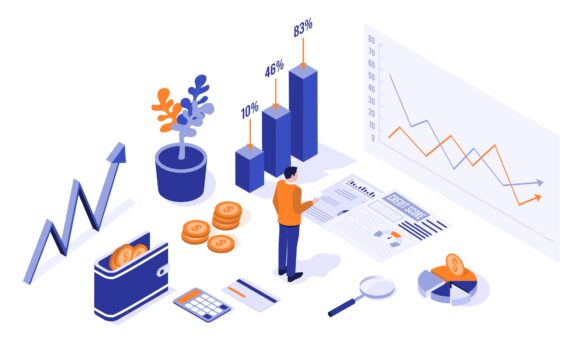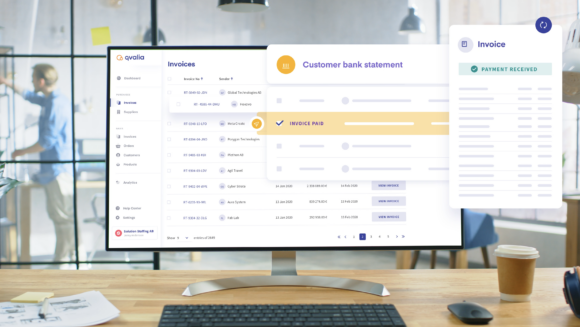
Surviving and thriving in today’s competitive market involves staying on top of industry trends and developments and finding ways to provide more value than your competitors.
That hyper-focus on growth and conversions and the desire for more sales, revenue, and profit means many companies ignore hidden value waiting to be discovered in their critical internal finance processes.
One area that many businesses often overlook is accounts payable (AP) and the value AP automation offers.
The buzz around AP automation might not be as loud as marketing or sales automation, but its impact is significant. This technology creates value by streamlining accounts payable processes and gives you better control over your finance process.
And while AP automation doesn’t generate revenue, it can unlock significant cost savings if you know where to look.
So, how can you calculate the ROI of an accounts payable automation investment? Let’s find out.
What is accounts payable?
No company produces all the tools, materials, and services they need. The majority purchase what they need from third-party companies, serving as suppliers. Accounts payable is a division of business finance that focuses on managing payments to your suppliers. Most but not all of these expenses are ordered in advance.
Typically, the supplier provides the product and sends an invoice to your organization for payment. The exact details of this process vary depending on the nature of the order, the industry, and individual business protocols.
Related terms
Some financial teams differentiate between accounts payable and trade payable. Accounts payable is typically an umbrella term that covers any short-term debts a business owes to its suppliers. A trade payable covers only inventory-related products required to run the bulk of the business.
For example, a grocery store has food and drink products as part of the trade payable. However, cleaning suppliers may merely be considered accounts payable.
You also might hear the term “accounts receivable,” which is essentially the analogous process for the supplier. When you pay your vendors, you gain an entry in your accounts payable, and the vendors add a similar entry for their accounts receivable.
In other words, it’s one of the core functions where business relations are manifested in practice.
What tasks are associated with AP?
Multiple steps are involved in making these payments, and not all of them have to be done by hand.
Invoice processing
Invoices come to the company through emails, physical documents, and increasingly electronic invoices using dedicated e-networks such as Peppol. They must go through the process of approval, checking, archiving, and finally, payment. Even before then, someone must sort and organize the documents.
Validation and error checking
To check for mistakes, finance teams, and individual buyers must check every invoice to ensure the agreed-upon amount is correct. Every invoice entry must also have relevant information attached to it, such as purchase context and order details. This long process typically involves tracing the order back to its supplier.
Even one missed or incorrectly submitted invoice can result in delayed future deliveries, potentially compromising your ability to serve your customers.
It can also cause capital leakage when as a result of for instance, mismanaged VAT, double payments, and overpayments.
Analyzing trends
Observing how your AP balance sheet changes year-to-year gives you insight into the company’s direction. For instance, a rise in the balance due suggests that the organization buys more products and services through credit. AP is thus a useful tool for managing cash flow.
Paying employees
Every step of the way requires company time to complete. Factor salary in when calculating how much accounts payable activities cost your organization.
The impact of suboptimal AP
What can you gain out of automating the management of accounts payable expenses? The answer is more than just revenue, as having an efficient and streamlined payment system indirectly raises your business’s chance of success.
Your reputation amongst suppliers
Attempting to handle accounts payable manually could result in delayed payments to suppliers, who will not only charge penalties but also be less likely to work with you and support your brand.
Your reputation with your clients
The quality of the products and services your organization creates directly correlates with the materials you receive from suppliers. Poor payment planning may result in compromised quality, which can reduce the strength of your brand amongst potential buyers.
Limited growth potential
It’s difficult for your company to scale when inefficient AP bottlenecks your workflow. Finding ways to expand your list of suppliers without burdening your employees should be a priority.
Undetected money leakage
AP errors can be costly and hurt your company’s bottom line. Outdated software or processes, or human errors, often lead to, for example, mistakes in VAT and payments. In turn, these mistakes cause money to leak from your process, which can be very tricky to detect within existing operations. In organizations with large volumes of transactions, this can add up to significant amounts each year.
Is automation for AP advisable?
The benefits of automation are familiar to any forward-looking specialist, manager, or business owner. By outsourcing repetitive tasks to software and cloud-based services, you are freeing up work hours for employees and reducing the possibility of human error.
Accounts payable is still a process that involves significant manual labor for most businesses. Let’s analyze the impact of automation on your accounts payable processes and whether you can expect a return on your investment.
The costs of implementation
Automated AP comes with a variety of initial investments, including the following:
- Automation software licenses. Professional-grade solution providers usually charge per user and have various pricing options to fit your business’s needs. Remember that you are paying for both the software and future updates.
- IT support. A license also entitles you to customer service directly from the company. You won’t be stranded if you have issues during use.
- Additional hardware. Because we deal with invoices, you occasionally have to convert a physical document into a digital format to use AP automation. Most service providers have mobile apps to scan these in with your smartphone. However, remember to factor in the cost of hardware scanners if you believe you need them.
To calculate return on investment (ROI), we also need to consider what you’re getting out of an automated AP service.
The benefits of AP automation
What do you get out of this automated processing technology? Knowing what the “return” portion of “return on investment” is, helps justify the initial cost of implementation.
- Easy invoice data collection. Automation services allow employees to capture invoice data in electronic format and often quite literally with cameras and scanning software. Technologies like optical character recognition (OCR) digitize information almost instantly.
- Faster payment processing. The time between the initial order and payment processing is much shorter, speeding up your responsiveness to your suppliers.
- Instant communication. There’s no need to follow up on approval processes since everyone can always access payment statuses. It’s also much easier to catch mistakes or fraud when data visibility is high.
- Centralized records. Since you can regulate transactions through the AP software, you can achieve much better cash flow than you can through manual means. More of your attention can go to strategic financial decisions this way.
- Tools for analysis. AP software helps you evaluate key performance indicators in your company’s payment processing to compare against industry standards.
You will find not only immediate benefits but also emergent ones too when you optimize your business payment system.
Adopting a new software solution for AP automation
Now that you’ve decided to start streamlining accounts payable operations in your organization, what’s the next step?
Talk with your teams. Communicate with the financial and IT departments to determine what needs to improve regarding AP. Are there any statutory or technical requirements to consider?
Find a solution. Look for services that meet your preferences. What are some typical ways your business processes payment information and how can this solution automate them? Build a list to compare the pricing structure and exact features advertised. Identify the most future-proofed vendors. Be aware of AP software vendors that haven’t adopted a future-proofed digital mindset and merely digitize yesterday’s process.
Work together on implementation. Draw from your IT and accounts payable team members to ensure the transition to an automated system is flawless. Integrate the solution with your enterprise resource planning system if applicable.
Don’t lose revenue on another financial quarter. Start enjoying the benefits of automatic invoice management as soon as you can. It can be one of the most profound investments your finance department makes.
Using automation to transform your accounts payable processes
Don’t make the mistake of only focusing on sales and growth. These two areas are incredibly important, but you can drive cost savings and improve productivity across your company in several ways.
Accounts payable automation is about optimizing essential finance tasks to reduce costs, eliminate delays, and minimize disruption to your core processes.
Are you interested in exploring everything AP automation can do for your company? Would you like to see how you can calculate AP automation ROI? Book a demo with one of our AP specialists today to get started.



